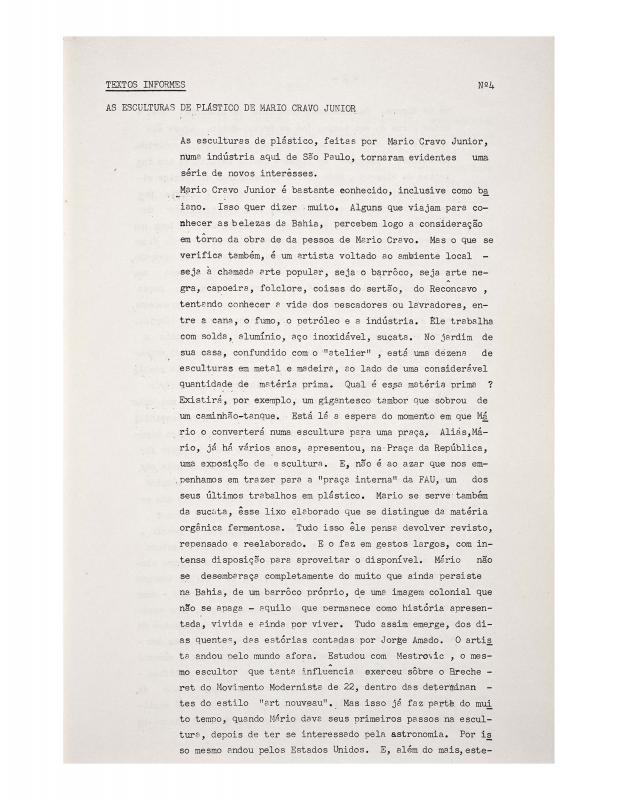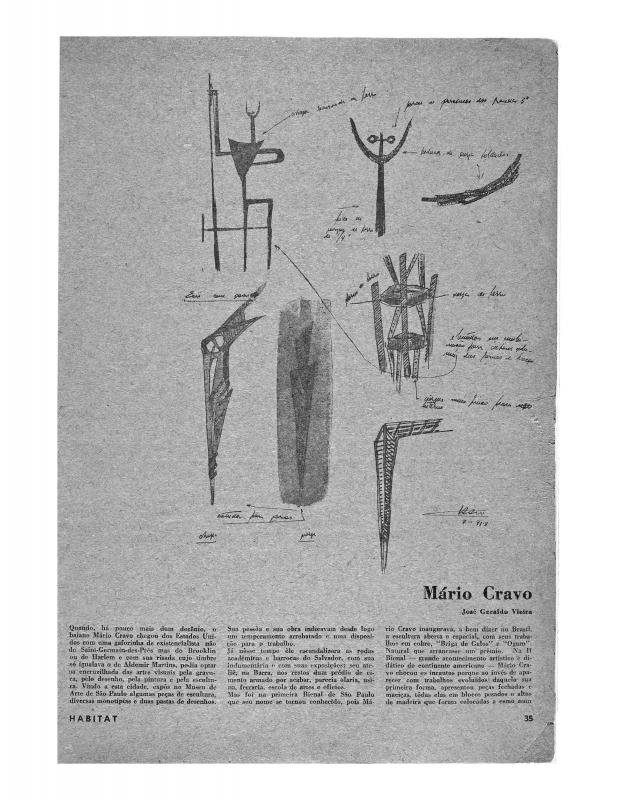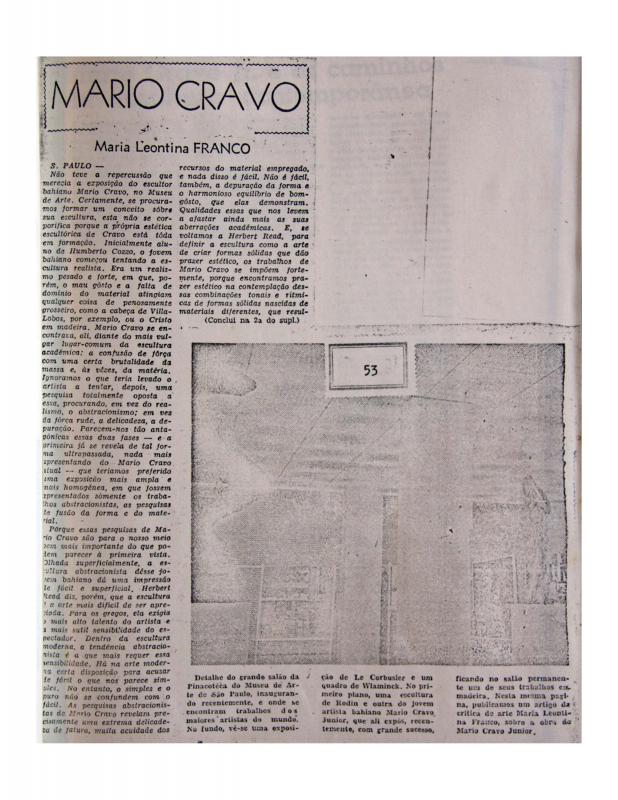In this article, Mário Cravo, Jr. (b. 1923) shares his thoughts on modern art, which in his opinion, has strayed in a number of ways from the prevailing “constructive” ideology of the 1950s in major Brazilian urban centers, São Paulo and Rio de Janeiro. Cravo would like to see a greater overlap between Brazilian cultural expression and international aesthetic values. He describes certain principles that govern his own sculpting, which combines popular artistic traditions from the “northeast” (specifically from the state of Bahia, where he is from) with a certain formal simplification, and with certain aspects of the technical refinement seen in modern art. In the 1950s, Cravo was the leader of the movement that sought to modernize the visual arts in Bahia, together with the painters Carybé [Héctor Páride Bernabó] and Carlos Bastos. These artists, whose work was shown in art museums and galleries in São Paulo and Rio de Janeiro, introduced Afro-religious subjects to Brazilian art.
[As complementary reading, see the following articles about the artist in the ICAA digital archive: by Flávio L. Motta “As esculturas de plástico de Mário Cravo Junior” (doc. no. 1111368); by José Geraldo Vieira “Mário Cravo” (doc. no. 1110465); and by Maria Leontina Franco “Mário Cravo” (doc. no. 1110698)].



